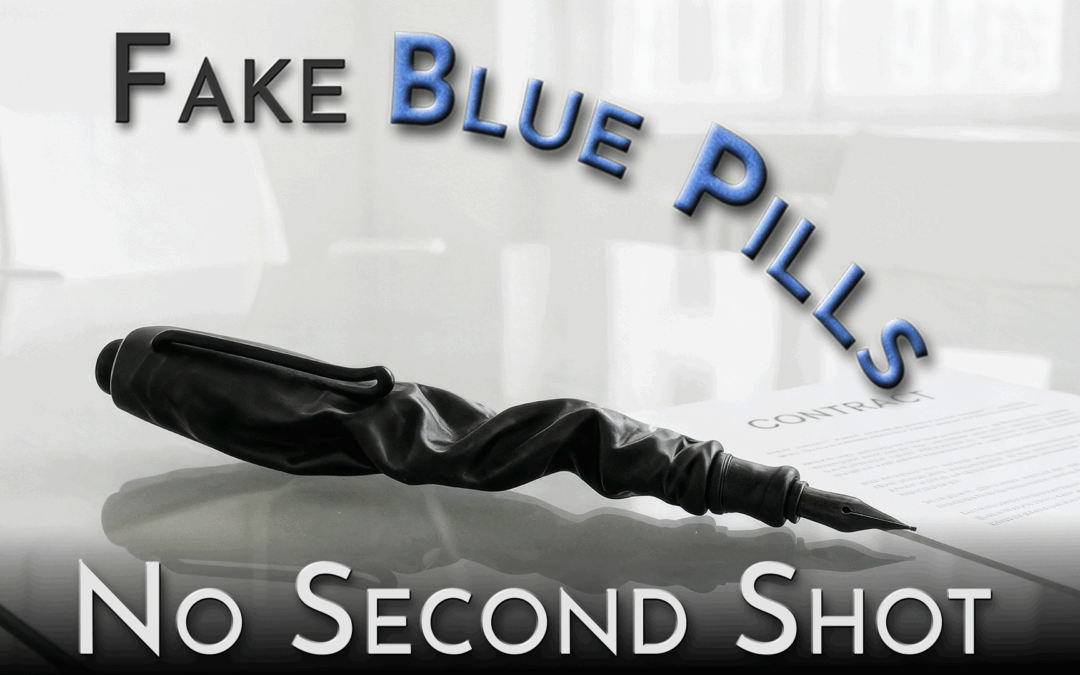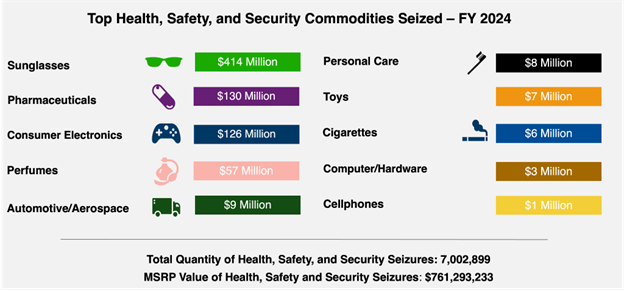Counterfeit Viagra and other treatments for erectile dysfunction (ED) pose a severe threat to public health and patient safety.
Studies show that around 13.6% of drugs globally are falsified or substandard. The problem is especially widespread in low- and middle-income countries, where supply chains are harder to control. In wealthier nations, the rate is lower — less than 1% in regulated pharmacies — but the danger increases dramatically on the internet. Especially for men’s health when high-demand medications like Viagra and Cialis are involved.
Several countries allow their citizens to buy erectile dysfunction medicine online. But legal or not, purchasing these tablets from unvetted sites carries serious risks. Many patients, hoping to save money, shop for sildenafil citrate — the active ingredient in Viagra — without a doctor’s prescription or medical oversight.
This demand creates an opportunity for counterfeiters. The global need for ED therapy remains high, and in many countries, prescriptions are required. That pushes some buyers toward informal and unsafe options. As a result, fake ED pills continue to spread, putting patients at risk and damaging trust in real pharmaceutical treatments.
A 2018 report from the National Association of Boards of Pharmacy found that only 4% of online pharmacies met U.S. standards. Yet, people still use these websites.
The persistence of these unregulated channels means falsified ED drugs remain a serious and ongoing risk to medical safety.
The Hidden Dangers of Fake ED Pills
Consuming unregulated Viagra or Cialis can be deadly. These medicines use sildenafil or tadalafil, both classified as phosphodiesterase (PDE) inhibitors that affect blood flow and the cardiovascular system.
PDE stands for phosphodiesterase, an enzyme family targeted by these inhibitors. When the active ingredient is not carefully dosed, the results can be unpredictable and dangerous for patients.
People with certain medical problems face life-threatening risks, since sildenafil can interact poorly with medications used to manage them. These conditions include:
- High blood pressure
- Diabetes
- High cholesterol
So-called “herbal Viagra” isn’t any safer. In 2015, a former professional basketball player collapsed after taking what was marketed as a natural alternative. The product was anything but, containing undeclared ingredients that posed serious dangers.
The incident underscored a harsh truth: even healthy individuals can suffer serious cardiac events from unregulated ED treatments.
Perhaps most surprising is how widespread falsified pharmaceutical items are. Yet, the scale of seizures highlights a growing global problem tied to illicit products.
In 2024, the U.S. Customs and Border Protection (CBP) agency seized $130 million worth of counterfeit pharmaceuticals, including more than a million erectile dysfunction tablets in a single joint operation with ICE and LAPD. Globally, agencies like INTERPOL and European regulators continue to lead large-scale pharmaceutical crime operations, targeting everything from fake lifestyle pills to falsified cancer medicine.
Source: U.S. Customs and Borders Protection
The high value of seized counterfeit drugs — second only to sunglasses — reflects just how lucrative and in-demand these substances are. Among them, ED therapies remain a primary target.
Why Erectile Dysfunction Tablets Are Heavily Counterfeited
According to Boston University professor Muhammad Zaman, fake Viagra is the most profitable counterfeit drug in terms of revenue. The reason is simple: demand is high, and many men are willing to bypass traditional pharmacies to obtain it.
And it’s easy to see why. For many men, going to a doctor and admitting to sexual performance issues is uncomfortable. Online pharmacies and sexual health websites offer a way around that conversation.
Combined with the lack of prescription requirements, unregulated internet sites become an appealing, if risky, alternative.
Another factor driving this black market is non-medical use. Many men take ED pills — specifically PDE inhibitors like Viagra or Cialis — recreationally, often to boost sexual performance, even without a medical need. Illicit online pharmacies fill that gap by offering easy access with no prescriptions required.
Compounding the danger is the lack of quality control.
Some fake Viagra tablets contain chemical analogs like sulfoaildenafil — synthetic compounds created to imitate PDE inhibitors such as sildenafil (Viagra) or tadalafil (Cialis). Unlike genuine formulations, these counterfeits are made outside regulated supply chains, with no oversight of their ingredients.
These shortcuts let counterfeiters cut costs, but the trade-off is patient safety.
Consequences for Patients, Providers, and Regulators
The presence of counterfeit ED therapies on the global market poses serious threats to all stakeholders:
- Patients – face risks from incorrect dosage, toxic chemicals, and treatment failure.
- Healthcare providers – lose visibility and control over treatment outcomes.
- Pharmaceutical companies – see their reputation damaged by falsified products.
- Regulators – struggle to monitor fast-moving online distribution.
If left unchecked, in the long run, everyone loses except the counterfeiters.
For patients, the biggest danger lies in the unpredictable effects of falsified PDE inhibitors. These pills can interact with existing medical treatment or fail to deliver the expected result, leading to health complications.
Healthcare professionals also lose trust, as counterfeit medicine undermines confidence in legitimate pharmaceutical brands such as Pfizer.
Regulators and law enforcement agencies face increasing pressure to respond yet are often outpaced by the speed and scale of internet distribution. And in some cases, resellers knowingly sell them, drawn by their low cost and high demand.
Anti-counterfeit tools and technologies exist, but not all of them have proven effective. In a fragmented global market, combating fake products requires constant vigilance.
Existing Anti-Counterfeit Solutions
Consumers don’t always understand the risks that come with buying ED medicine such as Viagra or Cialis from online pharmacies. Many assume these tablets are legitimate, especially if the website looks professional or mimics a well-known brand. But appearances can be deceptive, and counterfeiters know how to exploit that.
To combat the proliferation of fakes, pharmaceutical companies have introduced several tools to protect their treatments:
- Holograms
- QR codes
- Tamper-evident seals
Unfortunately, visible protections like these markings can be altered, forged, or removed. Any protection that depends on human verification will be inherently vulnerable to counterfeiting.
For anti-counterfeit solutions to work, they need to go beyond surface-level packaging. The strongest systems reduce reliance on visual inspection and make it easier for brands and patients to verify authenticity.
What makes detection even harder is how quickly counterfeiters adapt. Once a method of identifying fake packaging becomes widely known, it’s often only a matter of time before it’s replicated or bypassed.
Some operations even test their fakes against real packaging standards to ensure they pass inspection. This constant evolution means that anti-counterfeit strategies must be flexible, layered, and ready to respond to new threats as they emerge.
How Counterfeiters Evade Detection
Counterfeiters have become highly skilled at disguising fake ED tablets as real ones. Their packaging often mimics legitimate medicine down to the smallest detail, including logos and barcodes.
To the average consumer, these pills look indistinguishable from genuine products.
Online, detection becomes even harder. The internet makes it easy to create sites that look like licensed pharmacies. These counterfeit websites often feature customer service, reviews, and even fake credentials to build a false sense of legitimacy.
Some are fronts for larger distribution networks, while others are temporary operations that vanish once flagged.
Counterfeit ED pills also move across borders in small packages, often purchased via the internet, that are difficult for customs agencies to track.
In fiscal year 2023, 85% of health and safety seizures by CBP happened in de minimis parcels arriving via international mail or express courier. Proof that shipments valued below $800 often cleared without formal inspection.
Together, these tactics allow counterfeiters to slip past both consumers and enforcement. That’s why relying on surface-level security — or assuming a pill is safe because it “looks right” — is no longer enough.
AlpVision’s Covert Anti-Counterfeit Solutions
Counterfeit protection only works if it stays ahead of counterfeiters. Overt packaging defenses, like holograms or visible labels, are increasingly easy to copy or remove. That’s why the future of pharmaceutical protection lies in covert, hard-to-replicate technologies.
AlpVision offers two such solutions: Cryptoglyph and the Secured QR Code. Used separately or in combination, these tools give pharmaceutical brands a reliable way to protect ED therapies throughout the supply chain — without relying on human inspection or visible markers alone.
Cryptoglyph is a digital authentication technology developed in 2001. It works by embedding microscopic, invisible patterns — often in the varnish layer of packaging — that are imperceptible to the naked eye but verifiable instantly with a smartphone.
Secured QR Code enhances traceability by combining standard 2D matrix codes with invisible authentication features. These codes can be scanned for supply chain data while also verifying the product’s authenticity.
Together, these technologies create layered protection, allowing manufacturers to confirm both packaging integrity and product origin.
Conclusion
Fake Viagra, Cialis, and other ED treatments remain a growing global challenge, fueled by illicit sites, unlicensed pharmacies, and weak enforcement across borders. These falsified PDE inhibitors pose dangerous effects for patients, undermine legitimate medical treatment, and erode trust in pharmaceutical systems.
The solution lies in:
- Stronger oversight of online pharmacies and internet sales.
- Better education on patient safety and counterfeit risks.
- Advanced anti-counterfeit solutions like Cryptoglyph and Secured QR Code.
- Collaboration between U.S. and European regulators to close loopholes in distribution.
By raising the barrier against counterfeiters, pharmaceutical companies can safeguard patients, strengthen trust, and preserve the integrity of legitimate medicine.
To learn more about how Cryptoglyph and Secure QR Codes work in practice, download our white paper.
Download Your Whitepaper


